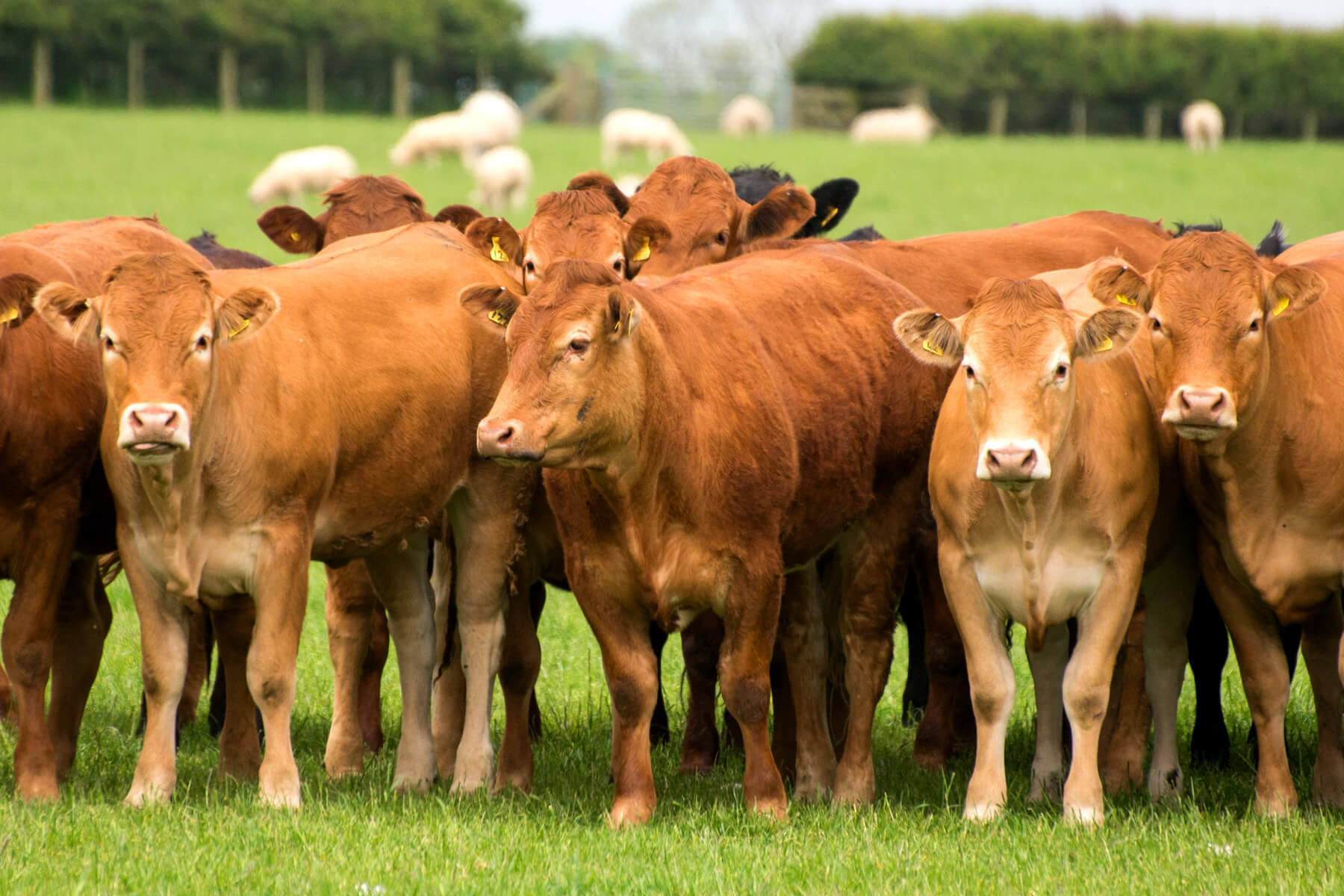
Low Steads lies on the very Eastern edge of the beautiful borders countryside. The land extends right down to the waters edge. It is officially recognised as an area of outstanding natural beauty.
Of the 312 acres, roughly one third of the land is down to cereals production, (wheat and barley), with the other, approximately 200 acres, used to grow grass, on which we fatten beef cattle and sheep.
At Low Steads, we still maintain and replace hedges, trees, walls and buildings, believing that it is not only good for the countryside, but vital shelter for the animals welfare as well. So if your butcher chooses to buy his livestock from us, you can rest assured that the meat you’re eating has been produced in a manner as natural as it is traditional. And that in doing so, he (and you) are helping to maintain a system of farming that is contributing to the preservation of the nation’s green and pleasant land.

The fertile ground and favourable climate enjoyed here make it an ideal farm on which to fatten cattle.
Whilst breeds may change and the consumers requirements alter, the methods used to feed and fatten the animals has not. Our cattle are nourished on feed grown by ourselves, the straw from which is used for bedding in the winter months. The manure from this is in turn put back onto the land to promote the growth of next years crops.
The animals arrive on the farm at about 10 to 12 months old, and it takes around one year to get them ready for market. During that time they will spend as much time as possible out grazing in the fields. Traveling to markets throughout the border counties of Scotland and Northumberland, care is taken to select the right animals which we feel will grow into what the butchers require.
When the winter months come, and most of the fields become too wet, we bring them into the sheds. Once inside they are fed a diet of silage and hay, both of which are made off the farm during the summer months.
Those approaching maturity and requiring extra protein are fed rolled barley and wheat to boost their diets. All the cattle are bedded using wheat and barley straw.

At Low Steads, we farm a mixed and rotational system. the fertility left behind after the animals have grazed the pastures is used to grow crops. By ploughing up the pasture after a period of years, we can destroy the weeds and parasites that build up due to the constant grazing by stock.
As we graze cattle and sheep outside on pasture. We plant hedges, maintain fences and restore walls, both as a means of keeping the animals in the fields and to provide shelter for them. Of course the other obvious beneficiary of this type of farming is the wildlife which utilise the hedges for shelter and food.
With the aid of a grant from Natural England, since 1992 we have replaced and restored nearly 7000 metres of hedging, planting in the process, about 50,000 hedge plants. Also, a stone wall of over 400 metres was taken down and completely rebuilt.
Recently, we have undergone a large programme of building work and renovation, enabling us to house the animals in safe, modern and well ventilated buildings.

A flock of around 250 Suffolk Cross ewes is kept for the production of wool and sheep meat. The sheep are out on pasture all year except during the lambing season, which begins around the 1st of March every year, when they are brought indoors during the night so that we can watch over them as they give birth.